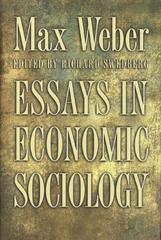Question
11. Studying how the management of US Steel, a large steel-producing company, decides how many tons of steel to produce and the price to charge
11. Studying how the management of US Steel, a large steel-producing company, decides how many tons of steel to produce and the price to charge for its steel would be considered
(a)descriptive economics.
(b)empirical economics.
(c)microeconomics.
(d)macroeconomics.
12.Studying how Bob's firm decides to produce one more unit of output is an
example of
(a)descriptive economics.
(b)industrial organization.
(c)macroeconomics.
(d)microeconomics.
13.______ focuses on the prices of individual goods and services and ______focuses on the rate of inflation.
(a)Microeconomics; macroeconomics
(b)Macroeconomics; microeconomics
(c)Microeconomics; microeconomics
(d)Macroeconomics; macroeconomics
14.Suppose you must decide whether to spend your last study hour of the day studying either economics or history. You are dealing with the concept of
(a)absolute advantage.
(b)comparative advantage.
(c)opportunity cost.
(d)Specialization and exchange
15.In the command economy of the former Soviet Union:
(a)economic decisions were decentralized.
(b)the means of production were owned by the state.
(c)economic incentives were lacking or grossly distorted.
(d)b and c are correct.
(e)All of the above are correct.
16.When economic decisions are made partly by government and partly by market forces, the system is called a:
(a)subterranean economy.
(b)mixed economy.
(c)market economy.
(d)command economy.
17.In a market economy, the decisions regarding allocation of resources is made by
(a)automatic forces of supply and demand.
(b)authorities in Washington D.C.
(c)planners in state capitals.
(d)committees from a variety of economic interest groups.
18.The market system provides a way
(a)to allow specialization and exchange to work in tandem.
(b)to improve the well-being of mankind.
(c)to allocate good and services.
(d)All of the above are correct.
19.The market system solves the
(a)"what" and "how" decisions but not the "to whom".
(b)"what" and "to whom" decisions but not the "the how".
(c)"how" and "to whom" decisions but not the "what".
(d)"what", "how", and"to whom" decisions.
20.When the entire demand curve shifts left, ceteris paribus:
(a)the quantity supplied increases as the price of the good increases.
(b)the quantity demanded increases as the price of the good decreases.
(c)the quantity supplied decreases as the price of the good decreases.
(d)the quantity supplied increases as the price of the good decreases.
21.Assume that Coca-Cola and Pepsi-Cola are substitutes. A rise in the price
of Coca-Cola will have which of the following effects on the market for Pepsi?
(a)A movement down along the Pepsi demand curve.
(b)A rightward shift in the Pepsi demand curve.
(c)A movement up along the Pepsi demand curve.
(d)A leftward shift in the Pepsi demand curve.
22.The opportunity cost to a city for using local tax revenues to construct
a new park is the:
(a)best alternative foregone by building the park.
(b)dollar cost of constructing the park.
(c)dollar cost of the old park.
(d)increased taxes necessary to pay for maintenance of the new park.
23.According to marginal analysis, you should spend more time studying economics if the extra benefit from an additional hour of study
(a)is positive.
(b)outweighs the extra cost.
(c)exceeds the benefits of the previous hour of study.
(d)will raise your exam score.
24.A farmer is deciding whether or not to add fertilizer to his or her crops. If the farmer adds 1 pound of fertilizer per acre, the value of the resulting crops rises from $80 to $100 per acre. According to marginal analysis, the farmer should add fertilizer if it costs less than:
(a)$12.50 per pound.
(b)$20 per pound.
(c)$80 per pound.
(d)$100 per pound.
25.The value of the slope of a society's production possibility frontier is called its
(a)marginal rate of substitution.
(b)inflation rate.
(c)unemployment rate.
(D)marginal rate of transformation.
Step by Step Solution
There are 3 Steps involved in it
Step: 1

Get Instant Access to Expert-Tailored Solutions
See step-by-step solutions with expert insights and AI powered tools for academic success
Step: 2

Step: 3

Ace Your Homework with AI
Get the answers you need in no time with our AI-driven, step-by-step assistance
Get Started


